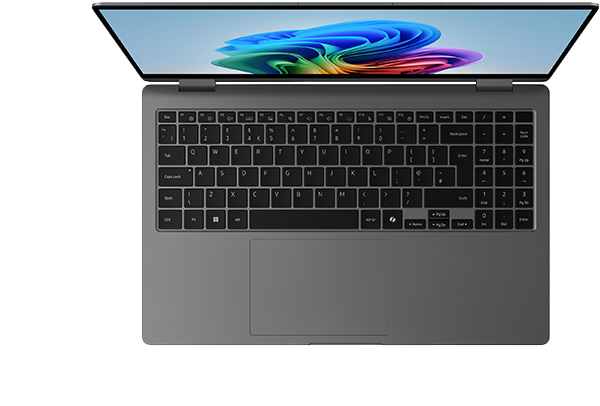Copilot+ Laptops for Business: Snapdragon X Elite vs Intel Core Ultra vs AMD Ryzen AI

While looking for a suitable laptop for my daughter to take to university—one with enough processing power, AI support, and longevity for the next three years (and stylish enough for an 18-year-old)—I realized my questions about vendor, processor type, and form factor are the same ones most organisations face today. As reliance on Copilot grows and more AI workloads shift to the device, choosing the right laptop has never been more important.
Copilot+ PCs bring on-device AI to Windows 11, boosting productivity in Microsoft 365, Teams, and enterprise workflows. But which platform is the right fit? Here’s how Qualcomm Snapdragon X Elite, Intel Core Ultra (Lunar Lake), and AMD Ryzen AI 300 compare—through the lens of the business user:
Business priorities when
choosing a Copilot+ Laptop
- Battery life for mobility: Sales teams, consultants, and executives need reliable all-day power.
- App compatibility: Legacy ERP systems, VPN clients, and security tools must run seamlessly.
- Security & manageability: Smooth integration with Microsoft Endpoint Manager, BitLocker, and virtualization is essential.
- AI readiness: NPUs delivering 40+ TOPS are needed to power Copilot+ features like Recall, Teams live captions, and local AI workloads.
- TCO & lifecycle: Device longevity, driver stability, and strong vendor support ensure long-term value.
Comparing Copilot+ PC
processors for business
When it comes to Copilot+ laptops, the processor you choose will directly impact performance, compatibility, and long-term value. Below, we break down the strengths and trade-offs of Snapdragon X Elite, Intel Core Ultra (Lunar Lake), and AMD Ryzen AI 300—all through a business lens.
Snapdragon X Elite for Copilot+ Laptops
- Unmatched battery life (often 20+ hours) for road warriors.
- Always Connected PC features: instant-on, 5G options for field teams.
- Strongest with ARM64-native apps; some legacy software requires emulation.
- Limited support for certain x86 workloads.
Intel Core Ultra (Lunar Lake) for Business PCs
- Full x86 compatibility—no surprises with legacy apps or drivers.
- Enterprise-ready with vPro options and a robust driver ecosystem.
- Balanced performance for productivity and light creative tasks.
- Solid battery life, though generally shorter than Snapdragon.
AMD Ryzen AI 300 for Enterprise Workloads
- Leading multi-core performance for data-heavy applications.
- Strong integrated GPU for Power BI, CAD viewers, and light 3D work.
- Battery life (~10–11 hours) less suited for frequent travelers.
- Fewer enterprise-focused SKUs and OEM partnerships.
Copilot+ Laptop decision matrix for IT


| Priority | Snapdragon X Elite | Intel Core Ultra | AMD Ryzen AI |
| Battery Life | ★★★★★ | ★★★★☆ |
★★★☆☆ |
| Legacy app support | ★★☆☆☆ | ★★★★★ |
★★★★★ |
| Manageability | ★★★☆☆ | ★★★★★ |
★★★★☆ |
| AI readiness | ★★★★★ | ★★★★☆ |
★★★★★ |
| Performance (multi-core) | ★★★★☆ | ★★★★☆ |
★★★★★ |
IT Checklist before you deploy Copilot+ PCs
- Application Compatibility: Validate line-of-business apps, VPN clients, and security tools on ARM if considering Snapdragon.
- Driver dependencies: Check for specialized peripherals that may require x86 drivers.
- Security & Compliance: Confirm BitLocker, Windows Hello for Business, and Conditional Access policies.
- Endpoint protection: Validate EDR/DLP solutions for ARM compatibility.
- Manageability: Ensure Intune/Endpoint Manager support; look for vPro/AMD PRO SKUs.
- Network & Connectivity: Snapdragon often includes 5G—check carrier certification and APN settings.
- AI Feature Readiness: Confirm Copilot+ features meet compliance and data retention policies.
Summary
It would be easy to state that the Snapdragon chipset is best for mobile-first workforces, Intel for your mixed environments/legacy apps and AMD for power users etc. But it is not as clear cut as that, each organisation has their own requirements and challenges.
My recommendation is to fully test a range of devices, from a range of manufacturers. During testing it is crucial that you test:
- The form factors of the laptops (the aesthetics and physical attributes are just as important to the end user)
- Legacy application compatibility
- AI capabilities – how will you make use of the functionality being offered, how will it improve the productivity of the users
Get this right, and you will have invested in a suitable business laptop that will provide service to your users for the next 3 years.
And what did we go with for my daughter? Still to be decided, but for her, and the sort of workloads she will be using, the ability to carry around all day with a long battery, Snapdragon is currently the preference (and it will run the sort of workloads she will be using at university).
Lee Gatland
Head of Technology Services
Related Blogs

How to make laptops more sustainable
Discover how extending the life of corporate laptops through refurbishment and responsible use can help reduce waste, carbon emissions and IT costs. Learn how the Turn It Green initiative makes technology more sustainable.

How Accountancy Firms can lead on Sustainability through smarter IT
Accountancy firms are under pressure to demonstrate sustainability—not just for their clients, but within their own operations. One area that’s often overlooked is the environmental impact of IT devices.
